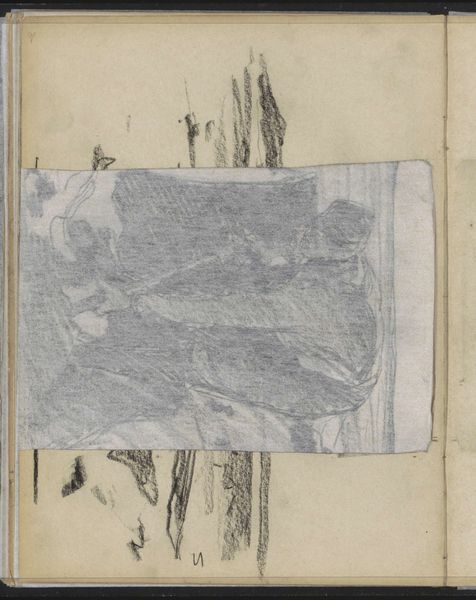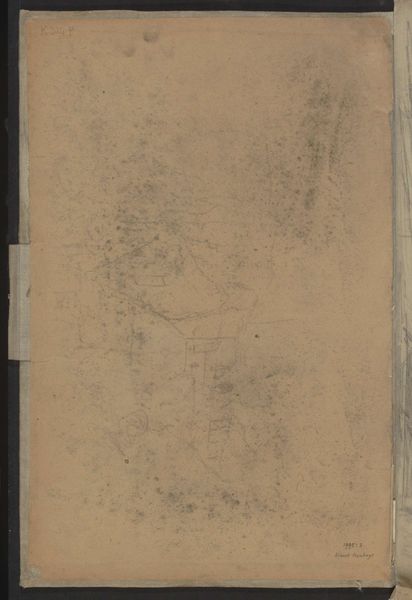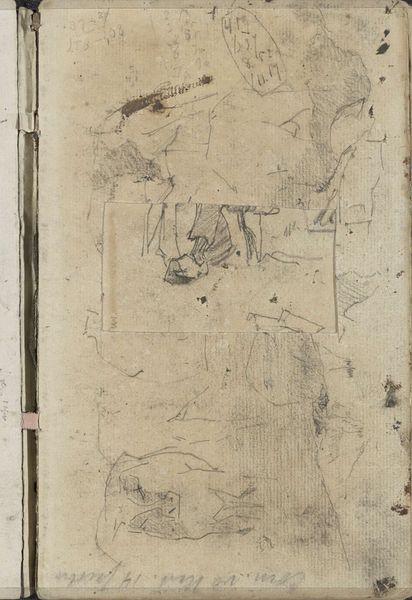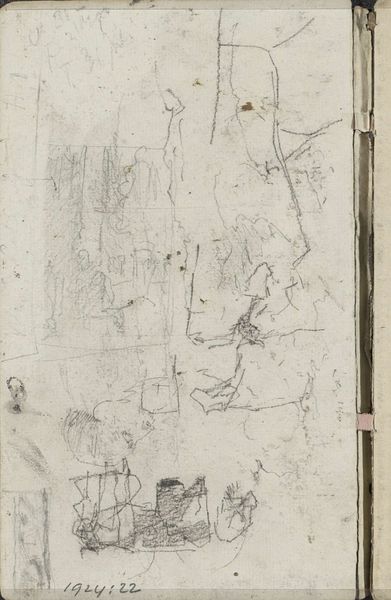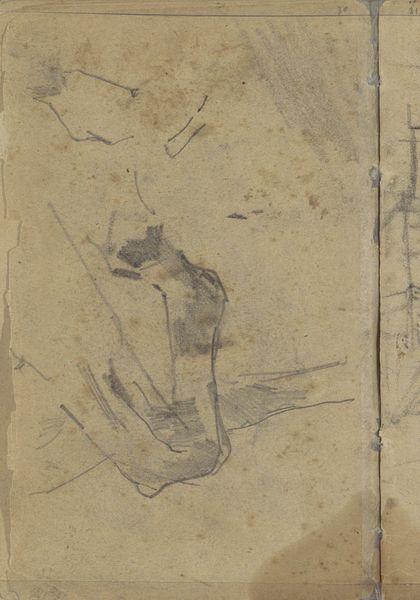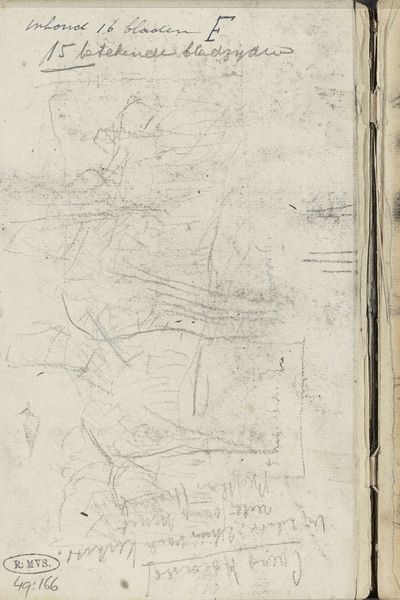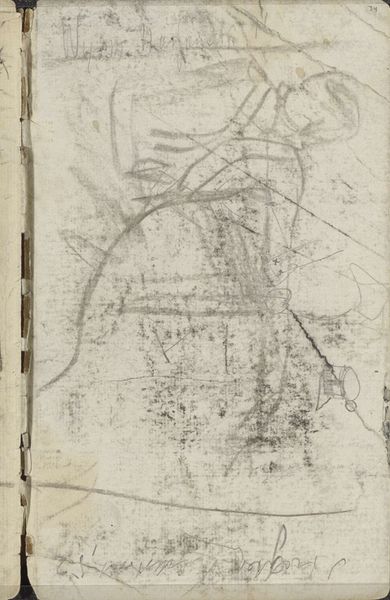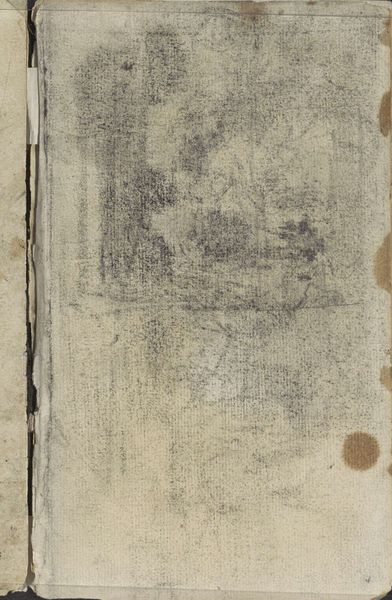
drawing, paper, pencil
#
drawing
#
landscape
#
paper
#
coloured pencil
#
sketch
#
pencil
Copyright: Rijks Museum: Open Domain
Curator: Willem Roelofs’ “Studies,” dating from 1846 to 1851 and held at the Rijksmuseum, presents us with an intriguing sheet of paper densely filled with pencil and colored pencil sketches. What are your first impressions? Editor: Chaos! A wonderfully energetic chaos. I see multiple landscape sketches overlaid on one another, almost like palimpsests, the earlier drawings struggling to emerge. The visible layers of paper create texture… the rough edges reveal the physical nature of the study. Curator: Indeed. The structural interplay of line and form dominates. Notice how Roelofs uses hatching and cross-hatching to create tonal variation, almost a sculptural depth, within what are ostensibly two-dimensional landscape vignettes. The repetition of forms… lines implying horizon, clustered foliage… serves as a formal exercise. Editor: Exactly. And the materiality! This isn't just a landscape; it's a record of *how* the landscape was perceived and translated through the hand of the artist using simple materials. These repeated landscapes represent a dialogue between Roelofs and his environment through material interaction. Were these preparatory drawings, or was it a form of meditation for the artist? Curator: The ambiguity adds to the fascination. Is Roelofs seeking a perfect composition, or exploring the very essence of “landscape” as an abstract concept? The different pencils suggest perhaps different techniques, different angles toward the subject. Editor: It makes me wonder about his studio, the accessibility of paper and pencil at the time, what constituted ‘waste’ versus ‘worth’ within his artistic practice. The labor involved in creating these sketches. The materiality allows us to reach further to see more within a historical framework. Curator: Your insights ground the piece in a very palpable way, enriching the viewing experience through the lens of production. It becomes less an idealized vista and more a material engagement with the natural world. Editor: And by extension, helps me value more fully the time and the skill invested. The act of art, made materially visible, is rendered anew.
Comments
No comments
Be the first to comment and join the conversation on the ultimate creative platform.
